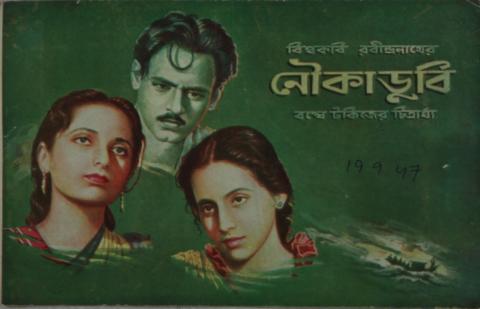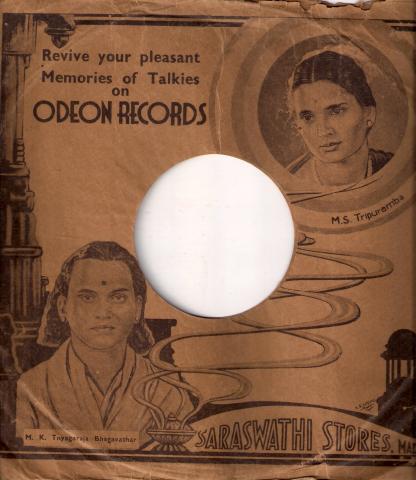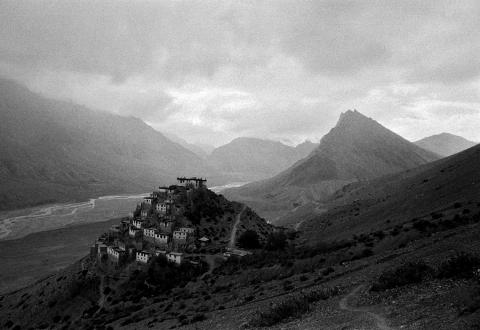Aims and objectives
The Buchen are performers of specialist rituals, travelling actors, healers and exorcists, and disciples of the 14th/15th century Tibetan ‘crazy saint’ Tangtong Gyalpo. They reside in the culturally Tibetan Pin Valley in North India and are most famous for performing an elaborate exorcism ritual called the ‘Ceremony of Breaking the Stone’. Their touring theatre and the material related to it is deeply threatened.
Buchen enact dramatisations of popular folk-tales, Buddhist morality plays which illustrate principles of karma and ideas of impermanence and are frequently enlivened with comedy. Buchen spread the teachings of Buddha through entertainment. These performances are related to the Tibetan Opera and to a tradition of lay religious performers called lama manipa, who retell the life stories of Tibetan saints whilst pointing out key scenes on narrative painted cloth scrolls (thangkas) with a metal pointer. Buchen theatrical performances contain a similar manipa-like introduction.
The Tibetan Opera is recognised as part of the world’s intangible cultural heritage. It is staged by professional groups in the major centres of Tibet and within the exile/diasporic community, but the peripheral regional forms of this theatrical tradition are under-researched. A digital archive of Buchen texts and thangkas will offer substantial material to future researchers of the wider Lhamo tradition.
This project has developed directly from the earlier pilot project EAP548. During this project it became clear that old Buchen texts and thangkas are rare and deeply endangered. Some material has already disappeared. Some has been sold, worn out by heavy use, interred in stupas or even burned. They are also threatened by inadequate storage conditions. The physical condition of the material varies substantially, taken on tour and subject to loss and damage. Some texts are incomplete or damaged; others are in remarkably good order. Some thangkas are very worn and faded, others beautifully preserved.
Approximately 6,000 digital files will be produced and deposited with the Library of Tibetan Works and Archives in Dharamsala and with the British Library.
Outcomes
In total material belonging to twenty three different “archives” were documented: twenty-one households in the Pin Valley, one monastery in Pin and one household in the main Spiti Valley. Twenty six households were visited but three would not allow documentation: each of these was located outside of Pin Valley and held small collections. Some households yielded only one or two objects, but some unique and particularly special objects are in small collections. Others households generated many hundreds of files. In total project EAP749 generated 4508 files. In addition to this 1652 files were previously submitted for the pilot project EAP 548.
The material documented varies in age from new to 150-200 years old. Precise dates are difficult to evaluate but dating was undertaken by discussion with both the household head / owner of the material and with Takpa Tanzin, working for the Library of Tibetan Works and Archives (LTWA).
This is a very special collection. A very small number of items are perhaps unique in the world but the main value of the collection is the rich cultural context of the material established by documenting all the performance related items of the Buchen of Pin Valley and archiving it in one place.
Very positively we discovered some important extra material. Of special interest were some previously unsurveyed statues and thangkas. A small number in total but as these objects are rare and special they represented a significant increase in the total found.
The records copied by this project have been catalogued as:
- EAP749/1 The texts (pecha) cloth scroll painting (thangkas) and other performance-related objects belonging to Meme Dorje Phuntsog
- EAP749/2 The texts (pecha) cloth scroll painting (thangkas) and other performance-related objects belonging to Meme Chhettan Dorje
- EAP749/3 The texts (pecha) cloth scroll painting (thangkas) and other performance-related objects belonging to Meme Dorje Phuntsog
- EAP749/4 The texts (pecha) cloth scroll painting (thangkas) and other performance-related objects belonging to Meme Tsewang Namgyal
- EAP749/5 Cloth scroll painting (thangkas) and other performance-related objects belonging to Meme Tsering Tobgye
- EAP749/6 Cloth scroll painting (thangkas) and other performance-related objects belonging to Kungri Gompa
- EAP749/7 Cloth scroll painting (thangkas) and other performance-related objects belonging to Meme Tsering Tobgye
- EAP749/8 Performance-related objects belonging to Meme Tsering Tobgye
- EAP749/9 The texts (pecha) cloth scroll painting (thangkas) and other performance-related objects belonging to Meme Tsering Tobgye
- EAP749/10 The texts (pecha) cloth scroll painting (thangkas) and other performance-related objects belonging to Meme Tsering Tobgye
- EAP749/11 Performance-related objects belonging to Meme Tsering Tobgye
- EAP749/12 The performance-related objects belonging to Jigmed Thakpa
- EAP749/13 Performance-related objects belonging to Meme Tsering Tobgye
- EAP749/14 The performance-related objects belonging to Chherring Angchuk
- EAP749/15 The texts (pecha) cloth scroll painting (thangkas) and other performance-related objects belonging to Meme Tsering Tobgye
- EAP749/16 Performance-related objects belonging to Meme Tsering Tobgye
- EAP749/17 Performance-related objects belonging to Meme Tsering Tobgye
- EAP749/18 Performance-related objects belonging to Meme Tsering Tobgye
- EAP749/19 The texts (pecha) cloth scroll painting (thangkas) and other performance-related objects belonging to Meme Tsering Tobgye
- EAP749/20 Cloth scroll painting (thangkas) and other performance-related objects belonging to Meme Tsering Tobgye
- EAP749/21 The texts (pecha) cloth scroll painting (thangkas) and other performance-related objects belonging to Meme Tsering Tobgye
- EAP749/22 The texts (pecha) cloth scroll painting (thangkas) and other performance-related objects belonging to Meme Tsering Tobgye
- EAP749/23 Cloth scroll painting (thangkas) and other performance-related objects belonging to Meme Tsering Tobgye




